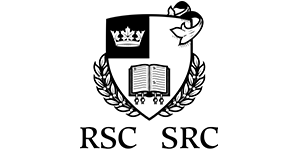How will climate change impact fisheries?

Fishing boat catching fish (golero, iStockphoto)

Fishing boat catching fish (golero, iStockphoto)
How does this align with my curriculum?
Learn about how climate change is impacting fisheries around the world.
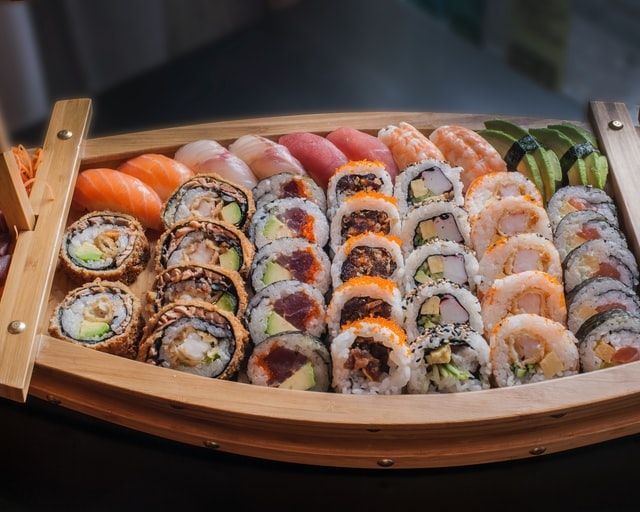
Image - Text Version
Shown is a colour photograph of a wooden plate of sushi and sashimi. About ten different types are shown. The sushi is arranged in columns on a wooden plate. There is one row of sashimi behind it. The sushi rolls are small pieces of fish and vegetables wrapped up in white rice.
Did you know?
The livelihoods of 1 in 10 people worldwide rely on fishing-related industries.
Unfortunately, climate change is impacting the fish that we eat. Learning more about this problem can help us come up with ways of solving it.
How is climate change impacting fisheries?
Earth's climate is a series of connected systems. But humans are impacting those systems by releasing greenhouse gasses into the atmosphere. Changes to the atmosphere impact the oceans. Here are some of the ways that climate change impacts fisheries.
Ocean temperatures are rising.
The average ocean surface temperature has risen by 0.07oC each decade for the past hundred years. It has risen twice as fast since 1985.
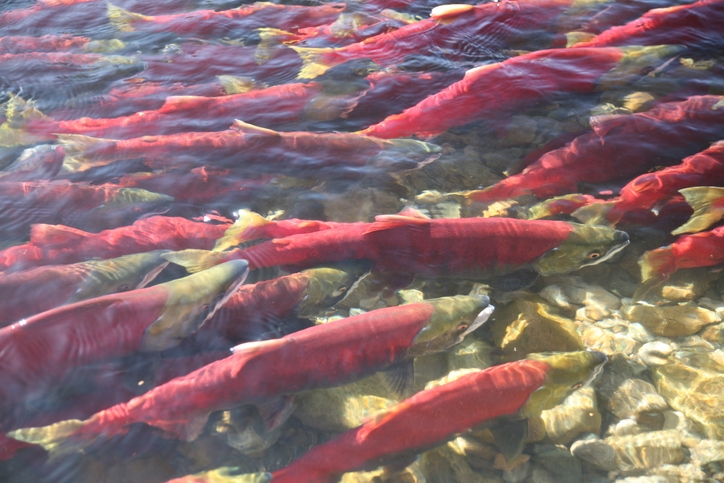
Image - Text Version
Shown is a colour photograph of sockeye salmon swimming in the Adams River near Chase BC. The river is shallow and extremely clear. It's bottom is made up of rocks in a bed of sand. About a dozen salmon are shown. They are very close together. The salmon have long dark pink bodies. Their heads are pointed and greyish yellow.
Oceans are acidifying.
Higher concentrations of atmospheric carbon dioxide leads to ocean acidification. In the past 200 years, there has been a 25% increase in ocean pH.
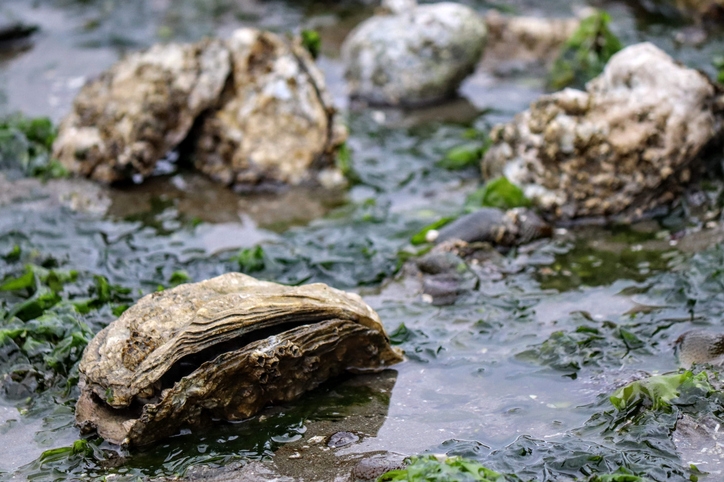
Image - Text Version
Shown is a colour photograph of oyster beds at low tide at Hood Canal, Washington. About four oysters are shown. The oysters have brown shells with long narrow openings. The shells have multiple overlapping layers. Some have barnacles attached to their shells. The oysters are sitting on a bed of wet brown mud and bright green seaweed.
Fish habitats are being destroyed.
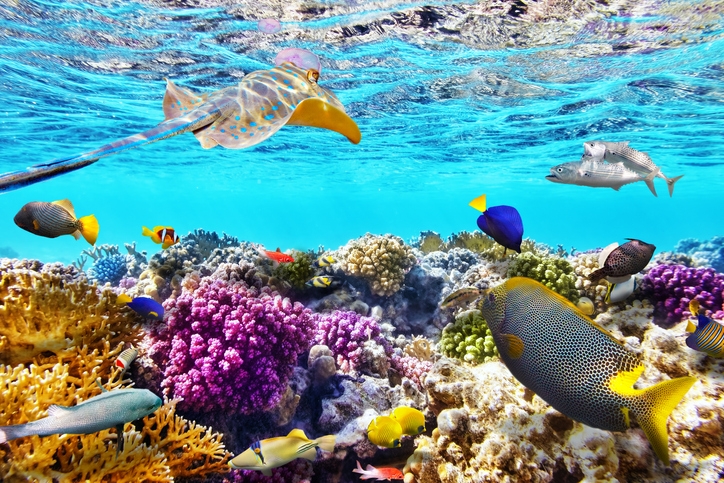
Image - Text Version
Shown is a colour photograph of fish swimming above a coral reef. The coral reef stretches across the bottom of the image. It is made up of purple, yellow, orange, and green corals. The corals have a variety of different shapes and textures. Some are bumpy and others have branches. Above the corals, colourful reef fish are swimming. A stingray with a long straight tail is swimming at the top of the picture. The water is a bright, clear blue.
Did you know?
About a quarter of all marine life is dependent on coral reefs at some point in their life cycle.
All of these changes are already decreasing the amount of fish available to catch for many species in our oceans.
How will these changes impact fisheries?
Scientists use computer models to make predictions about the future. scientists use computer models to help them determine how many fish to catch sustainably in a changing ocean. These models are based on information about ocean ecosystems and climate change. What the models are showing is that increased atmospheric carbon dioxide will decrease the number of fish people will be able to catch. On the other hand, there will be increases in the number of fish for species that like warmer waters.
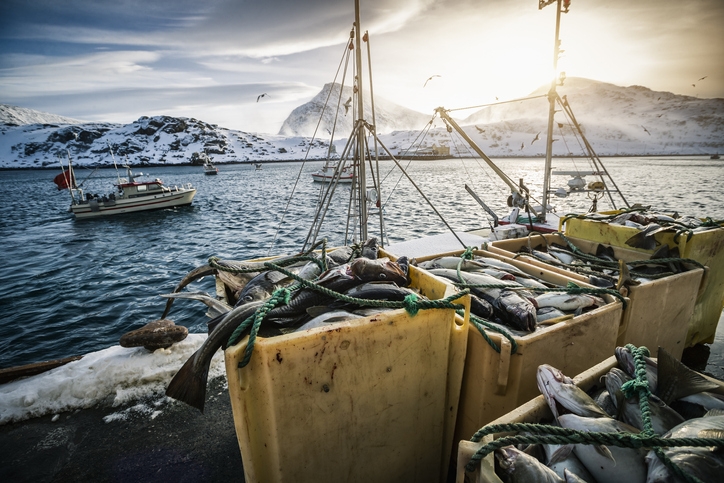
Image - Text Version
Shown is a colour photograph of an industrial cod fishing boat in northern Norway. Hundreds of cod are piled in big yellow bins on the deck of a ship. The cod are long and narrow. Their backs are grey and their bellies are white. Ropes lie on top of the bins. Other boats are visible in the distance. They are floating on dark teal water. Snow covered mountains are visible in the distance. Bright sunlight is shining on the entire scene.
These impacts may also make global inequality worse. For example, in tropical regions, catches will be drastically reduced. People living in these regions who depend on fisheries for food and income will be greatly impacted.
Did you know?
Seafood is the most traded food product by value.
How are fisheries responding to these changes?
Government officials decide how many fish can be caught in a given year by a given country. These are called . Determining these numbers is not an easy task.
For example, in the Gulf of Maine, rising water temperatures are killing cod. Officials managing cod fisheries did not account for this decrease. The quota was set too high, which led to overfishing.
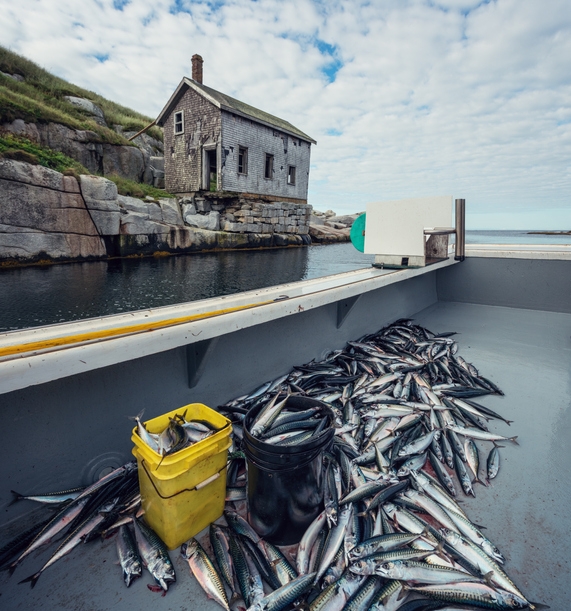
Image - Text Version
Shown is a colour photograph of Atlantic mackerel in a fishing boat. The fishing boat has a grey interior with a white rim. Hundreds of fish are in a pile on the floor of the boat. There is a plastic yellow bucket with additional fish inside. The fish are long and slender. They have shiny silver bellies and striped grey and silver backs. The boat is floating on dark, calm water. A nearby shore is made up of large grey and brown stones, rising steeply up from the water. A house is sitting on the shore by the water's edge.
These are not the only two fish impacted by climate change. As the atmosphere continues to get warmer, we will see more and more species impacted, at a faster rate and on a larger scale.
How can we address this problem?
We can still take action to address this grand challenge. The world has set the goal to limit global warming to 1.5oC above what it was before the late nineteenth century. Achieving this goal would reduce the impacts of climate change on global fisheries.
Fisheries themselves can adapt by protecting and restoring fish populations and habitats. They can also reduce their own pollution and the number of fish they catch.
Watch the video below for an example of a project that restores fish habitat in British Columbia.
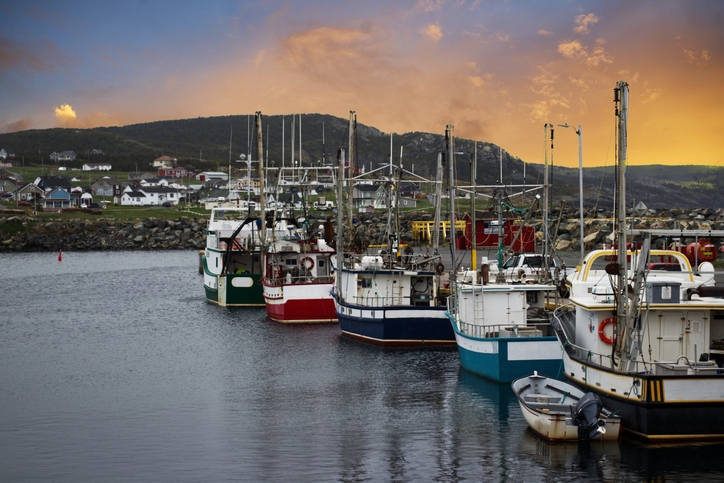
Image - Text Version
Shown is a colour photograph of five docked fishing boats in Bonavista, Newfoundland. The boats all have tall masts and ropes tied to them. Most of the boats are white above with hulls of various colours. The water they are sitting in is dark and still. Houses are visible on a distant shore. A dark green mountain rises behind the houses. A yellow sunset is visible behind the mountain.
We can also all help by supporting the transition to a low carbon society. We can spread the word and ask businesses and politicians to do the same. We are now at a crossroads of the future seafood sustainability. We are changing our oceans in unprecedented ways. But it is possible to create fisheries through good science and collaborative efforts to find solutions.
Let’s Talk Science appreciates the support of William W. L. Cheung, Professor and Director, Institute for the Oceans and Fisheries, The University of British Columbia and the Royal Society of Canada in connecting us with the author.
About the Royal Society of Canada
The Royal Society of Canada is a member-driven organization that recognizes Canada's leading scholars, researchers, artists and scientists from across disciplines and across generations in order to help build a better future in Canada and around the world. Let’s Talk Science and the Royal Society of Canada work together to provide timely content on issues that affect us all – from education to the impact of leading-edge scientific discoveries.
Learn More
What is Ocean Warming and Why Does It Matter?
Learn more about ocean warming in this article from Let’s Talk Science.
Should we farm fish and seafood?
Learn more about sustainable seafood through this case study about aquaculture from Let’s Talk Science.
Underwater farms vs. climate change (2019)
This video by TedEd (4:31 min.) introduces aquaculture, along with its main issues and solutions.
The State of World Fisheries and Aquaculture: Meeting the Sustainable Development Goals (2018)
This document, from the Food and Agriculture Organization of the United Nations, has a wealth of information about the fisheries and aquaculture sector.
Fish and Climate Change
Watch this video to learn more about fish from NYSDEC.
References
Bennett, J. (Apr. 2018). Ocean Acidification. Smithsonian Institution.
NOAA Fisheries (n.d.). Understanding Our Changing Climate. National Oceanic and Atmospheric Administration.
